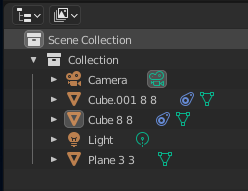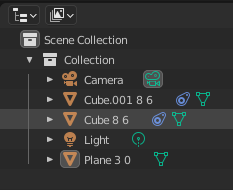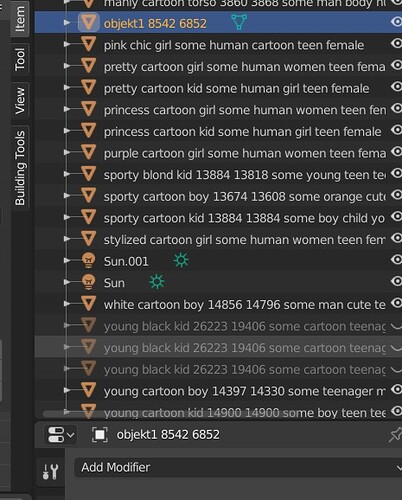Also, how can I display it as a list for each selected object? (so i dont need to run the code 50 times for each object) This would be a big help.
Sure.
![]()
import bpy
VAR_LIST = []
c1 = bpy.context.window_manager.clipboard = str(bpy.context.scene.statistics(bpy.context.view_layer))
c1.encode("utf8")
for c2 in c1.split(" | "):
if "Verts:" in c2 or "Faces" in c2:
VAR_LIST.append(c2)
bpy.context.window_manager.clipboard = str(VAR_LIST)
bpy.ops.text.new()
bpy.ops.text.paste()
Yes you can do this, but since it’s object oriented programming (OOP), you’re going to need to access each object individually.
import bpy
VAR_LIST = []
c1 = bpy.context.window_manager.clipboard = str(bpy.context.scene.statistics(bpy.context.view_layer))
c1.encode("utf8")
for o in bpy.data.objects:
if o.type == "MESH":
m = o.evaluated_get(bpy.context.evaluated_depsgraph_get()).to_mesh()
c1 = str(str(o.name) + " | Vertices | " + str(len(m.vertices)) + " | Faces | " + str(str(len(m.vertices))))
VAR_LIST.append(c1)
bpy.context.window_manager.clipboard = str(VAR_LIST)
bpy.ops.text.new()
bpy.ops.text.paste()
thank you very much. You saved me hours of work.
I have one last question on that.
I want the vertices and faces added to the name to each object. So that “object1” becomes “object1 8512 8512”. Can you add that to the code?
Done. I also added spaces between the object name, vertices count & faces count to help distinguish between each of the 3 type of strings.
Screenshot
![]()
Script
import bpy
VAR_LIST = []
c1 = bpy.context.window_manager.clipboard = str(bpy.context.scene.statistics(bpy.context.view_layer))
c1.encode("utf8")
for o in bpy.data.objects:
if o.type == "MESH":
m = o.evaluated_get(bpy.context.evaluated_depsgraph_get()).to_mesh()
c1 = str(str(o.name) + " " + str(len(m.vertices)) + " " + str(str(len(m.vertices))))
VAR_LIST.append(c1)
bpy.context.window_manager.clipboard = str(VAR_LIST)
bpy.ops.text.new()
bpy.ops.text.paste()
Done… I removed the copy/paste code though. If you want it re-implemented, you’ll need to tell me which one you want re-included. It’s getting a bit difficult to keep track of which one you’re keeping.
Screenshot

Script
import bpy
for o in bpy.data.objects:
if o.type == "MESH":
m = o.evaluated_get(bpy.context.evaluated_depsgraph_get()).to_mesh()
o.name = str(str(o.name) + " " + str(len(m.vertices)) + " " + str(str(len(m.vertices))))
thank you. that is the right code, but instead of 2x vertices, i need the vertices and then the faces numbers. So e.g.:
Objekt 500 502
My apologies! For some reason the second object attribute was set to vertices as well, not faces. ![]()
Should be fixed now. Feel free to tell me if it isn’t.
Screenshot

Script
import bpy
for o in bpy.data.objects:
if o.type == "MESH":
m = o.evaluated_get(bpy.context.evaluated_depsgraph_get()).to_mesh()
o.name = str(str(o.name) + " " + str(len(m.vertices)) + " " + str(len(m.polygons)))
Thank you so much!
